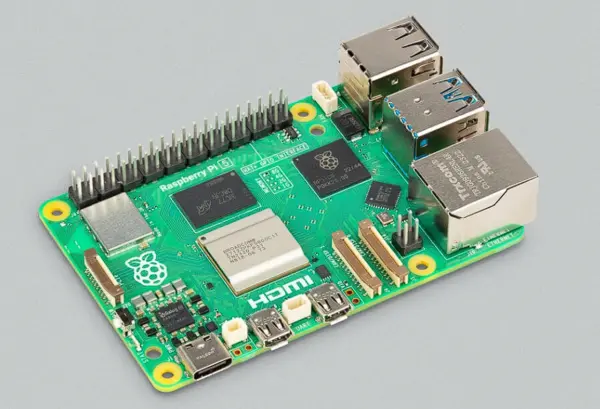The amazing development team over at the Raspberry Pi Foundation have released a new video discussing the image processing power of its latest mini PC the Raspberry Pi 5. Currently available to preorder the latest addition to the range brings with it more power and features especially in terms of its image processing capabilities.
The Raspberry Pi 5 has introduced significant changes in how it handles data from the camera compared to its predecessors. This overview guide provides more information and details of these improvements, focusing on the features and capabilities of the Raspberry Pi 5’s image processing. As well as an interview with the development team responsible for creating the Pi 5 in a video embedded below.
At the heart of the Raspberry Pi 5’s image processing capabilities is the Image Signal Processor (ISP), a feature that has undergone considerable upgrades. The ISP is located on the Raspberry Pi chip and is responsible for processing the raw data from the camera sensor. This raw pixel data, which is initially quite raw and unrefined, is processed into a high-quality output image. Notably, the ISP does not deal with image encoding or JPEGs; its primary role is processing the raw data into a visually pleasing image.
Raspberry Pi 5
The Raspberry Pi 5’s ISP is clocked higher and runs at two pixels per clock. This higher throughput ISP allows for higher resolution and frame rates, significantly enhancing the Raspberry Pi 5’s imaging capabilities. The introduction of this feature is a testament to the strides Raspberry Pi has made in improving the image processing capabilities of its miniature computers.
In addition to the improved ISP, the Raspberry Pi 5 has introduced temporal denoising. This feature averages frames where they are the same, reducing noise and improving video quality. This is a significant advancement, especially for applications that require high-quality video output.
Improving the Raspberry Pi image processing process
The Raspberry Pi 5 also introduces High Dynamic Range (HDR) imaging. This feature combines several images to avoid highlights blowing out and dark areas being too dark. HDR imaging is a crucial feature in modern imaging technology, and its introduction in the Raspberry Pi 5 underscores the device’s advanced capabilities.
One notable aspect of the Raspberry Pi 5’s ISP is that it was developed at Raspberry Pi and is their platform. This means that it allows for future development and improvements, promising even better image processing capabilities in the future.
The Raspberry Pi 5’s specifications further underscore its advanced image processing capabilities. The device boasts a Broadcom BCM2712 2.4GHz quad-core 64-bit Arm Cortex-A76 CPU, a VideoCore VII GPU that supports OpenGL ES 3.1, Vulkan 1.2, and dual 4Kp60 HDMI display output with HDR support. It also comes with LPDDR4X-4267 SDRAM, dual-band 802.11ac Wi-Fi, Bluetooth 5.0 / Bluetooth Low Energy (BLE), and 2 × 4-lane MIPI camera/display transceivers.
The Raspberry Pi 5 represents a significant step forward in terms of its imaging capabilities compared to its predecessors. Its advanced ISP, temporal denoising, and HDR imaging capabilities, coupled with its robust specifications, make it a powerful tool for a wide range of applications. With the Raspberry Pi 5, users can look forward to a miniature computer that delivers high-quality image processing, promising a more immersive and visually pleasing experience.
Pi 5 specifications
- Broadcom BCM2712 2.4GHz quad-core 64-bit Arm Cortex-A76 CPU, with cryptography extensions, 512KB per-core L2 caches and a 2MB shared L3 cache
- VideoCore VII GPU, supporting OpenGL ES 3.1, Vulkan 1.2
- Dual 4Kp60 HDMI display output with HDR support
- 4Kp60 HEVC decoder
- LPDDR4X-4267 SDRAM (4GB and 8GB SKUs available at launch)
- Dual-band 802.11ac Wi-Fi
- Bluetooth 5.0 / Bluetooth Low Energy (BLE)
- microSD card slot, with support for high-speed SDR104 mode
- 2 × USB 3.0 ports, supporting simultaneous 5Gbps operation
- 2 × USB 2.0 ports
- Gigabit Ethernet, with PoE+ support (requires separate PoE+ HAT)
- 2 × 4-lane MIPI camera/display transceivers
- PCIe 2.0 x1 interface for fast peripherals (requires separate M.2 HAT or other adapter)
- 5V/5A DC power via USB-C, with Power Delivery support
- Raspberry Pi standard 40-pin header
- Real-time clock (RTC), powered from external battery
- Power button
For more information on the latest Raspberry Pi 5 mini PC and up to the date prices and ordering information jump over to the official product page.
Source: Raspberry Pi 5 features improved image processing


